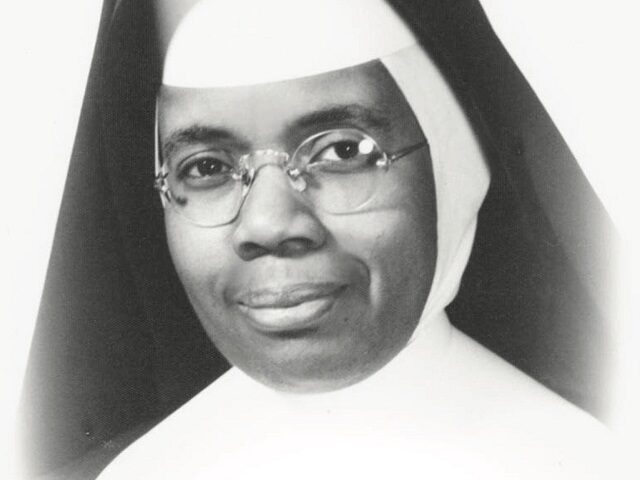Thousands of pilgrims have traveled to a monastery in Gower, Missouri, to view a nun’s body which appears to show no signs of corruption four years after her death.
Sister Wilhelmina Lancaster, foundress of the Benedictine Monastery of Mary, Queen of Apostles, died in 2019 at the age of 95. When her body was exhumed some four years after her passing so it could be moved to its final resting place inside a monastery chapel, it was found to be “incorrupt,” a term referring to the preservation of the body from normal decay.
“Last month, in preparation for the construction of the shrine, we exhumed her, having been told to expect bones in the highly moist clay of Missouri, as she was buried in a simple wooden coffin without any embalming whatsoever four years ago,” the monastery declared.
When the coffin was opened in the presence of the community, however, the body was covered in a layer of mold but both the nun’s mortal remains and her religious habit had suffered almost no decomposition during the four years.
“I thought I saw a completely full, intact foot and I said, ‘I didn’t just see that,’” said Mother Cecilia, OSB, the abbess of the monastery.
The abbess added that she looked again more carefully then screamed aloud, “I see her foot!” after which the community “just cheered.”
“We think she is the first African American woman to be found incorrupt,” Mother Cecilia said.
The deceased nun Sister Wilhelmina, known for her devotion to the Traditional Latin Mass, founded the Monastery of Mary Queen of Apostles in 1995 at the age of 70.
News of the discovery that her body seemed incorrupt has traveled fast, prompting an official investigation as well as a preliminary statement from the Diocese of Kansas City – St. Joseph.
“The condition of the remains of Sister Wilhelmina Lancaster has understandably generated widespread interest and raised important questions,” the statement reads. “At the same time, it is important to protect the integrity of the mortal remains of Sister Wilhelmina to allow for a thorough investigation.”
Local Bishop James Johnston “is working to establish a thorough process for understanding the nature of the condition of Sister Wilhelmina’s remains,” it continues, noting that incorruptibility “has been verified in the past, but it is very rare.”
“There is a well-established process to pursue the cause for sainthood, but that has not been initiated in this case yet,” it adds.
In their statement, the Benedictine sisters said that they believe their foundress to have been a very holy woman but have not initiated the cause for her beatification, the process toward being declared a saint in the Catholic Church.
“While we can attest to Sister’s personal sanctity, we know that incorruptibility is not among the official signs taken by the Church as a miracle for sainthood, and that all things must be subjected to further scrutiny, especially by the competent authorities in the medical field,” they stated.
Sister Wilhelmina’s body was laid out in the monastery chapel until Sunday, when the sisters held a rosary procession. On Monday, they intend to encase the body in a glass shrine near the altar of St. Joseph in the chapel.

COMMENTS
Please let us know if you're having issues with commenting.